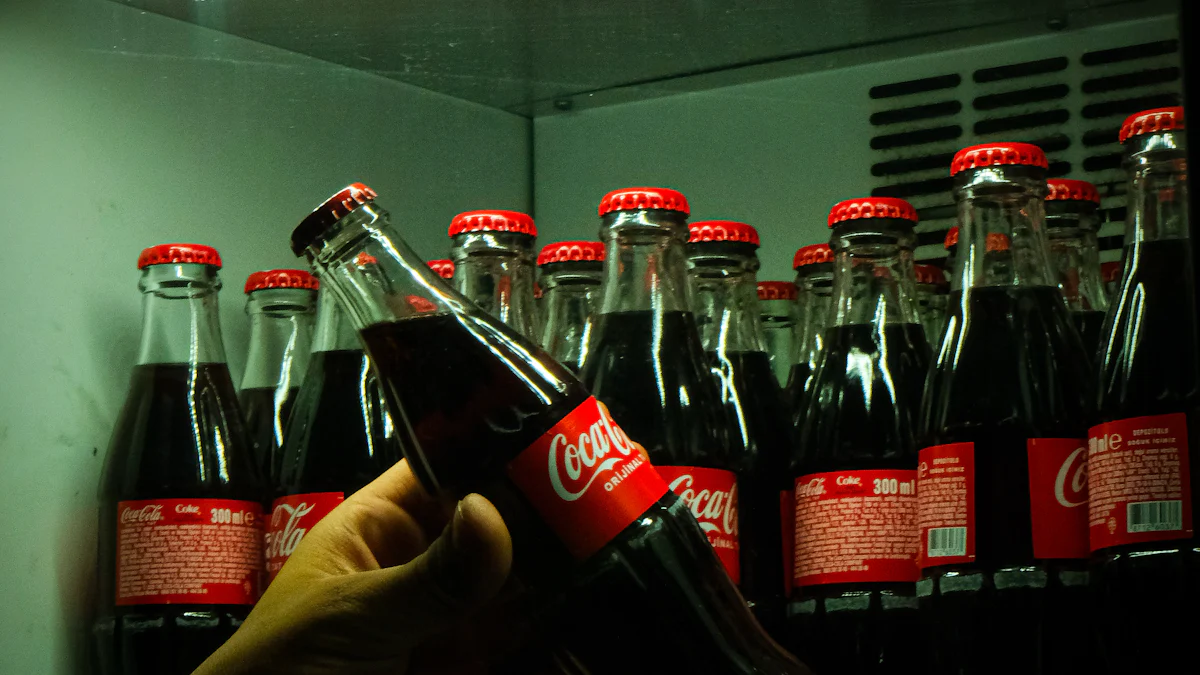Top Tips for Efficient Cold Room Temperature Control

Maintaining the right cold room temp is crucial for keeping food and drinks fresh and safe. It also helps save money on energy bills. Hot air inside a cold room can contribute to 30% of the heat. By being energy smart, you can significantly reduce electricity costs. These costs increased from £560.6 million in 2021 to £1.1 billion in 2022. Therefore, controlling your cold room temp not only protects your items but also safeguards your finances.
Best Temperature for Cold Room Storage
Getting the cold room temperature right is important. It keeps your items fresh and safe. Let's look at the best temperatures for different storage needs.
Food Storage Temperature
For food, the cold room temp is very important. Fresh fruits, dairy, and perishables do well between 2°C and 8°C. This stops them from going bad and keeps them fresh. For meats or frozen foods, use a walk-in freezer. These freezers are much colder, usually between -18°C and -22°C. This keeps food safe for a long time.
Beverage Storage Temperature
Drinks need specific cold room temps to stay good. Most drinks do well in 2°C to 10°C range. This keeps them cool without freezing. Whether sodas, juices, or alcohols, right temps make sure they taste great when served.
Other Perishables Storage Temperature
Some perishables like medicines need special care. Medicines often need a precise temp of 5°C with ±3°C tolerance. This ensures they work properly and stay stable. Some chemicals need colder temps; freezer rooms can go as low as -30°C if needed.
By knowing the best cold room temp for each item type, you keep products lasting longer and better quality. The right temperature also helps save on energy costs.
Practical Tips for Keeping Cold Room Temperatures Right
It's important to keep your cold room at the right temperature. Here are some easy tips to help you do that.
Thermostat Settings
First, let's talk about the thermostat. Set it to the best temperature for what you're storing. For most foods, this is between 2°C and 8°C. Check the thermostat often. A broken one can change temperatures and ruin your stuff. If it's not working right, fix or replace it.
Air Circulation
Next is air movement. Good air flow makes sure cold air reaches everywhere in the room. Arrange things so air can move easily around them. Don't pack shelves too full or stack items too high; it blocks vents and makes warm spots. You could add fans to help move air better. Good airflow keeps the whole room at a steady temperature.
Insulation Techniques
Finally, let's talk about insulation. Good insulation keeps cold in and hot out of your cold room. This means your fridge doesn't have to work as hard, saving energy costs. Use materials like foam for better insulation and open doors less often to keep heat out. Air curtains can also help when doors are open.
By using these tips, your cold room will work well and save money on power bills.
Common Challenges and Solutions

Handling Temperature Changes
Temperature changes in a cold room can be tough. They spoil goods and waste energy. But you can fix this with easy steps.
Regular Monitoring: Watch the temperature closely. Use good thermometers or digital tools. Check them every day to keep things in the right range.
Proper Sealing: Ensure doors and windows close tightly. Gaps let warm air inside, causing changes. Look at seals often and change them if worn out.
Routine Maintenance: Plan regular checks for your cooling system. Clean coils and fans to help it work well and stop sudden temperature shifts.
Backup Power: Think about having backup power. Power cuts can cause temperature spikes. A generator or battery backup keeps the cold room steady during emergencies.
By doing these steps, you reduce temperature changes and protect stored items.
Improving Energy Efficiency
Making your cold room energy-efficient saves money and helps equipment last longer. Here are some useful tips:
Upgrade Insulation: Good insulation is important. It keeps cold air in and hot air out. Use new materials like foam panels for better results, reducing cooling system work.
Modern Cooling Systems: Buy energy-saving cooling units that use less power but perform better. Choose models with high energy ratings.
Smart Technologies: Use smart technologies that adjust temperatures based on use patterns, optimizing energy without hurting storage conditions.
Regular Maintenance: Do regular check-ups by cleaning and servicing equipment to ensure smooth running, preventing energy waste, and extending cold room life.
By using these strategies, you boost your cold room's energy efficiency, saving costs while improving performance.
Keeping the right temperature in your cold room is important. It keeps your products safe and good. Cold rooms stop germs from growing, so things stay fresh longer. You also save money by wasting less and using less energy. Using these tips helps protect what you store and makes you work better. Start today to make your cold room smarter and more useful. Your items and money will be happy!
See Also
Key Safety Guidelines for Cold Room Operations
Steps to Create an Ideal Cold Room for Produce
Choosing the Right Walk-in Cold Room for Your Needs

